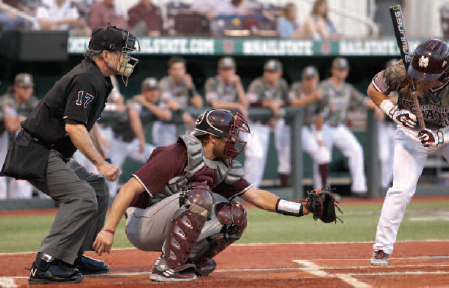
Many high school programs have a similar problem: their catchers don’t get enough practice time. Most of the issues fall into two categories: a lack of catching knowledge or an issue with practice economics.
If knowledge is an issue, there is plenty of information on the subject from many trusted sources. The ABCA Convention and the ABCA Calls from the Clubhouse podcast have both featured excellent conversations on catching from smart, experienced coaches. As it so often is, knowledge is just a few clicks away.
The larger issue relates to practice economics. Within the context of a high school practice, coaches often have little time and little manpower. As a result, catching work gets shortchanged. However, there are a few options for coaching staffs who struggle to find practice time devoted to improving their catchers.
Prepractice
Prepractice is an easy way to squeeze in a drill period for your catchers. Depending on your practice schedule, showing up 15-25 minutes before practice starts would give your catchers time for their drill period while the rest of the team does its warmup. Efficiency will be important, so place an emphasis on the most valuable catching skills: receiving and blocking. If a catcher has a specific deficiency that needs work, coaches can focus on that aspect. But if the goal is to improve a catcher overall, then receiving and blocking work need to be the meat and potatoes of any short drill period.
Batting Practice
Most Batting Practice sessions feature a shag period. If catchers are not busy catching bullpens, a shag period is a great time to work in catching drills. Coaches will have an entire outfield to work with, so they should get creative. If a catcher is ready, design drills that will force a catcher to respond to the same type of chaos they would see in a game situation. The work does not need to be long and tiring, but should be enough to maintain a catcher’s sharpness.
Pregame
Like all other baseball skills, some light catching work should be a part of a team’s pregame routine. The starting catcher should not do much, but some light movement work can be beneficial. Set up a simple triangle drill to focus on blocking technique and footwork. There is no need for receiving work here. There will be plenty of pregame receiving to do from the starting pitcher’s warm up.
Bullpens
If done correctly, bullpen work can be extremely beneficial to a catcher’s development. Coaches can use this time to get their catchers plenty of quality work. Bullpens create part of the chaotic element of a game situation since a catcher has to react to the ball out of the pitcher’s hand. Coaches can come up with a protocol for their catchers to follow as well as targets to achieve. A sample bullpen session could look like this (based on a 40-pitch bullpen):
- 5 primary stance—stick all strikes
- 10 secondary stance—block everything
- 5 primary—stick all strikes
- 5 secondary—throw down footwork to 2B; pick if in dirt
- 5 primary—stick all strikes
- 5 secondary—throw down footwork to 3B; block if in dirt
- 5 primary—stick all strikes
- Pitch out to LHB and RHB
Receiving target: 100% catch rate
Blocking target: 90% block rate
Catching is like any skill—it needs focused, deliberate practice to improve. Finding time and space for the catchers to work should be one of a coach’s top priorities. If a coach is creative enough, no amount of manpower or time issues should stand in the way.